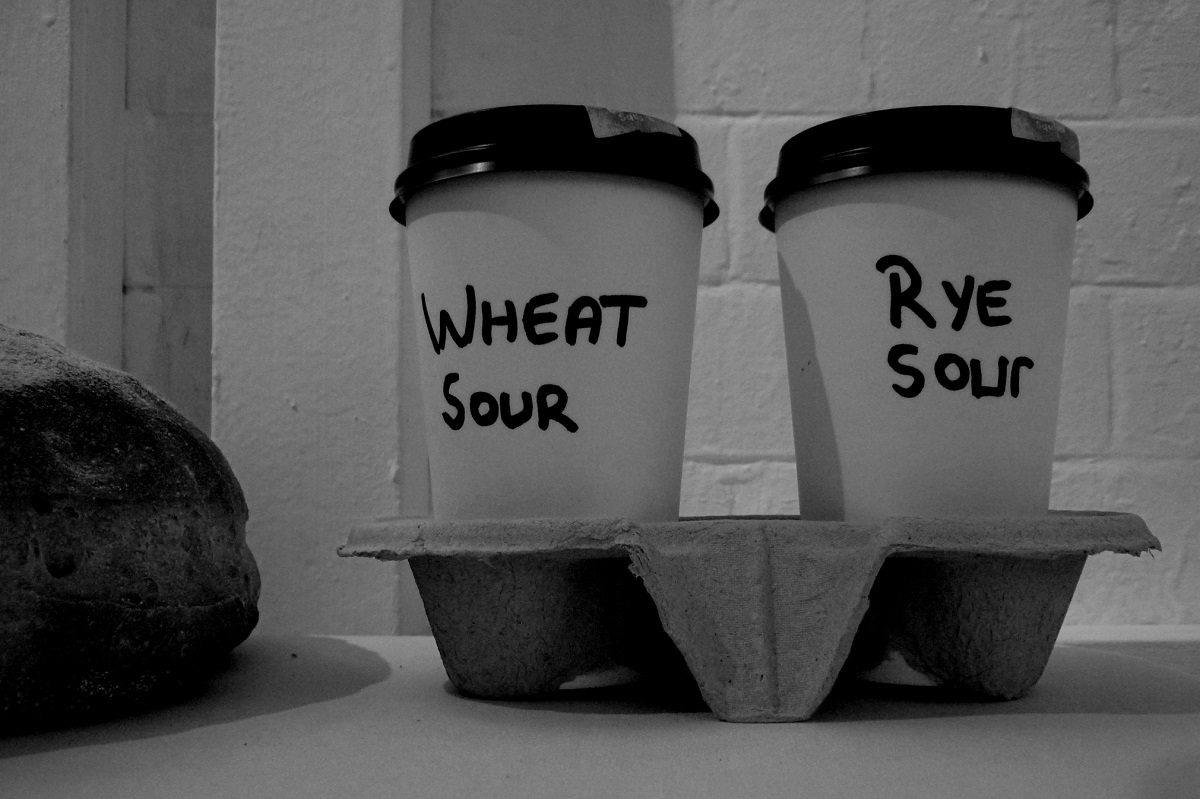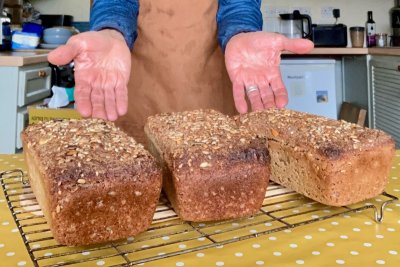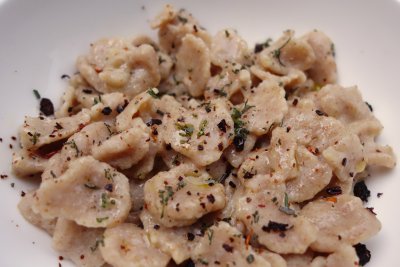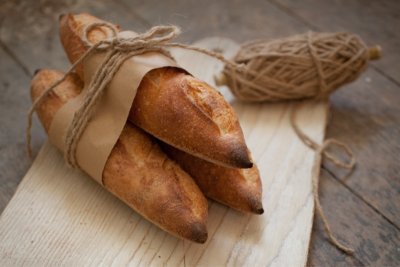Sustain / Real Bread Campaign / Recipes
Simple sourdough starter and care guide
Basic steps for budding bakers, without unnecessary ingredients.

Forget instructions like running around with a bowl to 'catch' wild yeasts. The following recipe (if you can call two ingredients a recipe) is both simple and effective, resulting in a 100% hydration, liquid starter.
Genuine sourdough bread is leavened (i.e. made to rise – like lever, it comes from a word meaning ‘to raise’) using only a culture of yeasts and - to use yoghurt marketer speak – ‘friendly’ lactic acid bacteria, which live happy and harmonious lives on the surface of cereal grains.
Rye grains seem to host very large microbe populations and, as those critters live on the outside of the grain, your chances improve when using wholemeal flour. It also seems to make sense to use organic flour as the crop won’t have been sprayed with fungicides.
A plastic container with a lid is convenient for storage and if your starter gets frisky, the lid will simply pop off, where a glass jar with a screwtop or metal clip seal could crack or shatter.
See also:
- Simple sourdough bread recipe
- Dough Monster! (a one-page, printable guide aimed at children)
Days one to five (ish)
30g rye flour per day
30g water (at about 20°C) per day
The amount of flour you use isn’t important so we’ve started small as instructions that tell you to throw portions of your starter away just seem wasteful. Please keep to the 1:1 ratio, though.
On each of the first five days, pop equal amounts of flour and water into your container, mix, close and leave at room temperature (again about 20°C) for 24 hours.
For the first few days, the mixture might seem lifeless and could smell vinegary or even a bit iffy. Don’t worry about this as it should soon start bubbling and the smell will develop into something yeasty and maybe even floral.
Day six (ish)
Once your starter is bubbling up nicely, you can use some to bake a loaf of Real Bread. This usually takes about four to seven days but might take more or less. If it’s not bubbling by day six, keep repeating the flour and water addition (refreshment) until it is.
Don't worry if the flour settles out and you end up with a layer of brownish liquid. This is just gravity working its magic and is normal. Either stir it back into your starter or pour it off. If your starter hasn't been used for a while, the second option is probably better as the liquid (sometimes known as hooch) will have started to become alcoholic, which can slow the starter down and also may lead to less desirable flavours in your bread.
Wheat starter
Though you can use the rye starter for wheat breads, you might prefer to convert it by replacing the rye in refreshments with wheat flour (white or wholemeal) until it is all wheat. Alternatively, you can start the process above using wheat flour from the word go. Again, wholemeal will give you a better chance. Whether you keep a rye, white wheat and wholemeal wheat starter all on the go, or just one, is up to you.
Caring for your starter
Each time you use some of the starter, simply replace with an equivalent quantity of flour and water – this is usually known as feeding or refreshing. You also need to refresh on the day before a baking session.
When refreshing, feel free to experiment with different ratios and total amounts of flour to water in your refreshments: a looser starter will ferment more quickly than a stiff one; refreshing more often or adding a large refreshment will dilute the taste and acidity
It’s a living thing (well, technically billions of living things) so get to know it. The acidity, flavour, aromas and speed at which starters work vary, so learn what’s normal for yours.
- Give it a name. You can’t call yourself a proper sourdough nut if you don’t (just don't tell Real Bread cofounder Andrew Whitley as he'll roll his eyes at you...)
- Forget it. Unlike other members of your household, your starter will be very forgiving of neglect. Though it will be happy to help you bake bread once a week or even daily, your starter can be left untouched at the back for the fridge for weeks or even months. The yeast and bacteria populations will decline over time but enough will live on in a dormant state. The longer you leave it, the longer it’ll take to ‘wake up’ though and it might need a few days’ of refreshments before it’s up to full vigour.
- Unless you are using your starter every single day, keep it in the fridge, which will slow it down and reduce the frequency at which you need to refresh it. You just need to remember to take it out and refresh it the day before you intend to make a loaf.
Unnecessary extras
To make a starter you need nothing but flour and water, but here are some other things you sometimes find in sourdough instructions, along with why that might be:
- Rhubarb. This sour stem is high in several acids, which can help deter pathogenic (bad) microorganisms and create an environment favoured by lactic acid bacteria.
- Hops also have anti-bacterial properties.
- Live yoghurt is also acidic and contains lactic acid bacteria, though not necessarily the types most suitable for producing bread.
- Mashed potato provides an extra source of food for yeast and bacteria.
- Grapes, raisins, sultanas and so on have yeasts and bacteria on their skins but again, not necessarily the strains most suited to making bread.
- Honey is high in sugars, on which the yeast can feed. Unpasteurised honey can also contain yeasts and bacteria itself.
Taken from Slow Dough: Real Bread by Chris Young, published by Nourish Books. Hardback, £20.
Reproduction prohibited without written permission of the copyright holder.
Published Friday 1 September 2023
Real Bread Campaign: The Real Bread Campaign finds and shares ways to make bread better for us, better for our communities and better for the planet. Whether your interest is local food, community-focussed small enterprises, honest labelling, therapeutic baking, or simply tasty toast, everyone is invited to become a Campaign supporter.




